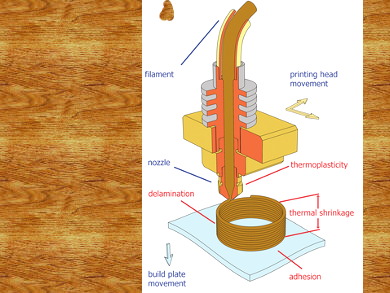Researchers in Russia have demonstrated that poly(ethylene-2,5-furandicarboxylate) (PEF) derived from biomass, a sustainable and renewable feedstock, might be used as the raw material for fused deposition modeling (FDM) 3D printing. This type of 3D printing involves building an object layer by layer from a fusible substance extruded from a heated “print” head.
Urgency to Introduction Purely Biobased Compounds
Fedor Kucherov, Evgeny Gordeev, Alexey Kashin, and Valentine Ananikov of the Zelinsky Institute of Organic Chemistry Russian Academy of Sciences in Moscow, emphasize that our reliance on non-renewable natural resources, such as petrochemicals derived from oil, their inherent non-recyclability, and the environmental cost of continued carbon dioxide emissions are critical problems we must now face.
Finding biological raw materials and sustainable feedstocks to usurp petrochemicals presents its own problems for industrial chemists and engineers. But, as the team points out, they must “inevitably replace fossil hydrocarbons in the near future”. The researchers add that materials derived from renewable sources then used in low-waste, lean manufacturing methods must be used to sustain our technological needs but with a much reduced environmental impact. “These topics define a new paradigm of carbon-neutral cycle processes, and the introduction of purely biobased compounds is now an urgent task,” the team stresses.
Could Carbon-Neutral 3D Printing be the Future of “Green” Manufacturing?
The researchers have carried out a lifecycle analysis of the conversion of cellulose from biomass to PEF to printed 3D objects. Their examination of such products demonstrates that PEF objects have much greater chemical resistance than objects printed with the more commonly used starting materials for 3D printing, such as ABS (acrylonitrile butadiene styrene), PLA (poly(lactic acid)), and PET-G (polyethylene terephthalate glycol-modified). Critically, their tests on PEF objects reveal several advantages including optimal adhesion, thermoplasticity, lack of delamination, and low heat shrinkage.
Additionally, the high thermal stability of PEF and its relatively low temperature for extrusion make it more readily recycled than other 3D printed polymer objects and so waste at end-of-life for an object or component might also be minimized. Indeed, the team has carried out several cycles of 3D printing and recycling with the same stock and found it to be entirely tenable. “The suggested approach for extending additive manufacturing to carbon neutral materials opens a new direction in the field of sustainable development,” the team reports.
Conversion of Cellulose Carbohydrates from Biomass to PEF
The conversion of cellulose carbohydrates from biomass to PEF is carried out via 5-(hydroxymethyl)furfural (HMF). The intermediary material HMF has been well studied and procedures for making it have been developed. Moreover, plant-scale systems for converting biomass into HMF have already been demonstrated as viable. HMF can be readily oxidized to generate 2,5-furandicarboxylic acid (FDCA), which is in turn esterified with methanol to produce a methyl ester derivative for polymerization to PEF. Thus, the team suggests, it should also be tenable to develop infrastructure for converting biomass into HMF and thence into the starting material for PEF production and so make it economically and technologically viable to use biomass as a feedstock for 3D printing a wide range of objects.
The team has used PEF thus derived from biomass to 3D print various objects and then carried out stress challenges to structural integrity with great success even for those objects made from repeatedly recycled PEF. “More detailed studies are anticipated in the near future to evaluate several important properties of biomass-derived polymers and to carry out dedicated optimization for better 3D-printing performance,” the team concludes.
- Three-Dimensional Printing with Biomass-Derived PEF for Carbon-Neutral Manufacturing,
Fedor A. Kucherov, Evgeny G. Gordeev, Alexey S. Kashin, Valentine P. Ananikov,
Angew. Chem. Int. Ed. 2017.
https://doi.org/10.1002/anie.201708528




